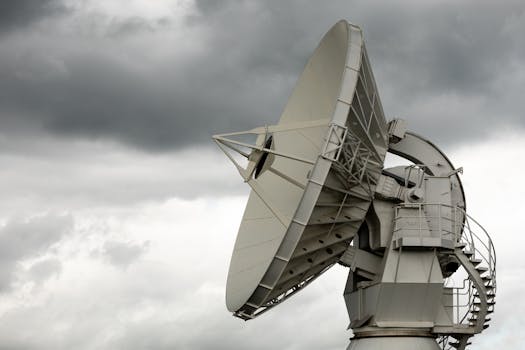GEO Satellites: Unlocking the Power of Geostationary Orbit
GEO satellites, or Geostationary satellites, are a type of satellite that orbits the Earth at an altitude of approximately 36,000 kilometers, which is the same distance as the Earth’s equatorial radius. This unique orbit allows GEO satellites to remain stationary relative to a fixed point on the Earth’s surface, making them ideal for a variety of applications. At the beginning of our discussion on GEO satellites, it’s essential to understand the significance of their geostationary orbit, which enables them to provide continuous coverage of a specific region.
The concept of GEO satellites was first proposed by scientist Arthur C. Clarke in 1945, and the first GEO satellite, Syncom 2, was launched in 1963. Since then, hundreds of GEO satellites have been launched, providing a wide range of services including telecommunications, weather forecasting, and navigation. The use of GEO satellites has become increasingly important in modern satellite technology, offering numerous benefits and advantages over other types of satellites.
Applications of GEO Satellites
GEO satellites have a wide range of applications, including telecommunications, weather forecasting, navigation, and Earth observation. In the field of telecommunications, GEO satellites are used to provide broadband internet, television broadcasting, and mobile phone services to remote and underserved areas. They are also used for weather forecasting, providing high-resolution images of cloud patterns, storm systems, and other weather phenomena. Additionally, GEO satellites are used for navigation, providing location information and timing signals for GPS and other navigation systems.
GEO satellites are also used for Earth observation, providing high-resolution images of the Earth’s surface, oceans, and atmosphere. These images are used for a variety of purposes, including monitoring climate change, tracking natural disasters, and managing natural resources. The application of GEO satellites in Earth observation has significantly improved our understanding of the Earth’s systems and has enabled us to make more accurate predictions and decisions.
Benefits of GEO Satellites
The benefits of GEO satellites are numerous, and they have revolutionized the way we communicate, navigate, and observe the Earth. One of the main benefits of GEO satellites is their ability to provide continuous coverage of a specific region, making them ideal for applications that require real-time data. They are also relatively low-cost compared to other types of satellites, and they can be launched using a variety of launch vehicles.
Another benefit of GEO satellites is their long lifespan, which can range from 10 to 20 years or more, depending on the specific satellite and its mission. This means that GEO satellites can provide a high return on investment, making them a cost-effective option for a variety of applications. The long lifespan of GEO satellites has also enabled us to collect long-term data sets, which are essential for understanding and predicting complex phenomena such as climate change.
Challenges and Limitations of GEO Satellites
Despite the many benefits of GEO satellites, there are also some challenges and limitations to their use. One of the main challenges is the risk of collisions with other satellites or space debris, which can cause significant damage or even destroy a GEO satellite. There is also the risk of radiation damage, which can affect the satellite’s electronics and shorten its lifespan. The challenge of GEO satellites is to mitigate these risks and ensure the safe and effective operation of these critical systems.
Another limitation of GEO satellites is their relatively narrow field of view, which can make it difficult to observe certain phenomena or events. They are also subject to interference from other satellites or terrestrial sources, which can affect their signal quality and accuracy. The limitation of GEO satellites highlights the need for continued research and development to improve their performance and capabilities.
Future of GEO Satellites
The future of GEO satellites is bright, with a wide range of new and exciting applications on the horizon. One of the most promising areas of research is the development of new propulsion systems, which could enable GEO satellites to change their orbit or attitude more efficiently. There is also a growing interest in the use of GEO satellites for space exploration, including missions to the Moon and beyond. The future of GEO satellites is likely to be shaped by advances in technology, changes in market demand, and the need for sustainable and responsible use of space resources.
In conclusion, GEO satellites are a crucial part of modern satellite technology, providing a wide range of services and applications. Their unique orbit and long lifespan make them ideal for a variety of uses, from telecommunications to Earth observation. As technology continues to evolve, we can expect to see even more innovative and exciting applications of GEO satellites in the future, further highlighting the importance of GEO satellites in our daily lives.
